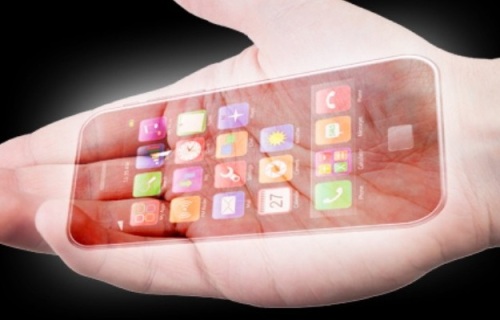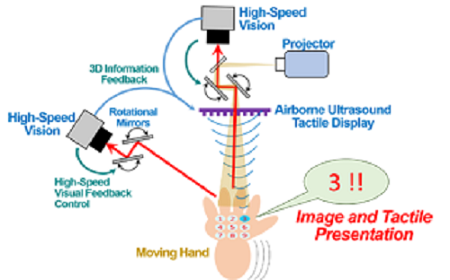As the industry continues to move toward smaller and smaller mobile technologies, Masatoshi Ishikawa and his colleagues at the University of Tokyo are hoping to get ahead of the trend with their new human-tech project, which can display everything from mobile phones to keyboards to computer screens on a user’s palm and provide tactile feedback when in use.

A new system developed by researchers from the University of Tokyo combines visual display with tactile feedback.
Ishikawa describes the technology as an entirely new system that integrates two subsystems together. One simultaneously detects the three-dimensional positioning of a moving object every two milliseconds using a high-speed, auto pan-tilt system, and projects pictures of the technology in use (smartphone, keyboard, etc.) onto the object via two rotational mirrors.
The other subsystem projects tactile sensation onto the object using ultrasound radiation pressure. The technology uses an array of ultrasonic oscillators to apply pressure on points of a surface, and is synched up with the visual display so that the user can decipher the meaning of the pressure.
The video here describes how the tactile projector works:
That said, the entire system looks—more or less—something like this:

A diagram detailing the technology behind Ishikawa’s system.
It’s a lot of technology for one system, and while there are others out there similar to it, what’s noteworthy about Ishikawa’s approach is the technology’s ability to operate at very high speeds — much higher than any human’s ability of recognition.
Now, it’s one thing to show you all of these still images and explain to you how it works. It something else to see the technology actually in action; that said, check out the following one-minute demo clip that Ishikawa and his team put together.
Ishikawa says that the goal is to eventually be able to embed intelligent functions into the visually displayed technologies.
To learn more, and to follow his lab’s progress on the development of the technology, visit kt.t.u-tokyo.ac.jp
Advertisement
Learn more about Electronic Products Magazine





